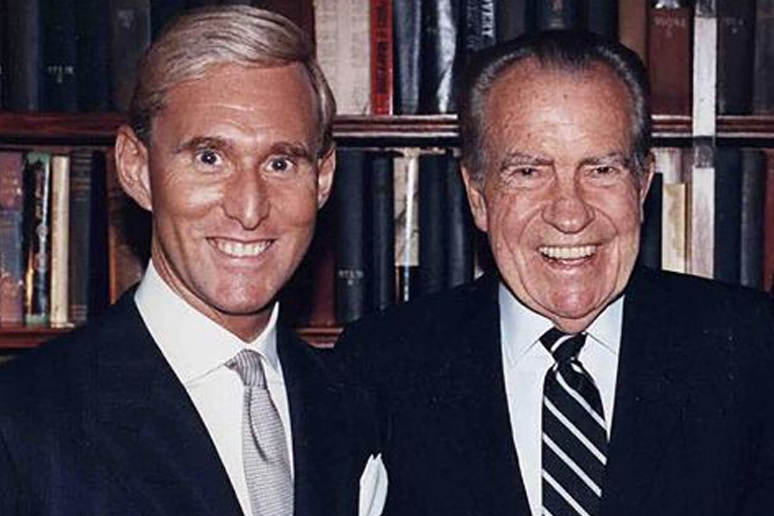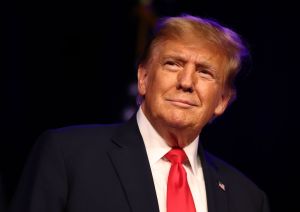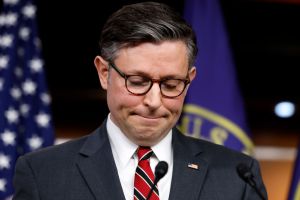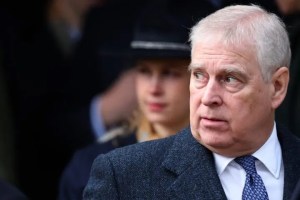The day after Special Counsel Robert Mueller arrested and charged me, the Nixon Foundation falsely claimed that I had no relationship with the former president.
The Nixon Foundation’s statement is ludicrous. The Foundation is run by people who never actually met Richard Nixon. In 1972, I was a junior member of Nixon’s re-election campaign staff.
I have pled not guilty to Mueller’s charges, and am respecting a gag order issued by the judge. But on the question of my warm and extensive relationship with President Nixon, the record must be corrected.
In 1972, as the youngest staff member on the Committee to Re-elect the President, I shook the great man’s hand only once, when he toured the re-election headquarters. My personal relationship with Nixon began in 1977, when he invited me to his home, Casa Pacifica in San Clemente, California after my election as National Chairman of the Young Republican National Federation.
An extensive, four-hour discussion of current American politics blossomed into a warm relationship. With Nixon’s move to New York City and subsequently to Saddle River, New Jersey, I had frequent contact with the former leader of the free world. I spent countless hours with Nixon discussing politics, and performed various — and documented — political chores for him.
Don’t take my word for it.
‘In early 1982, [Nixon] attended a GOP fundraiser in New York,’ veteran CBS and NBC newspaper Marvin Kalb wrote in The Nixon Memo (1994). ‘It was [Nixon’s] first political appearance and he was worried about timing. “I hope this isn’t too soon,” he told consultant Roger Stone.’
Kalb’s source?: Newsweek, May 2, 1994, p. 30.
‘In early 1981,’ Kalb continued, ‘New York magazine published a bold cover with the words “He’s back!” emblazoned across a picture of Nixon. And indeed the former president was back… Roger Stone, a tough-minded political operative from the Reagan campaign, suggested that Nixon “very selectively” invite young, “unbiased” reporters to a separate round of private dinners.’
Kalb’s source?: Michael Beschloss, Vanity Fair, June 1992, p. 118.
Ed Rollins, manager of Ronald Reagan’s campaign for re-election in 1984, writes that my relationship with the former president led to the campaign assigned me to give weekly briefings to Nixon on Reagan’s re-election efforts: ‘Stone was responsible for keeping in touch with Nixon, and they chatted often,’ the Associated Press reported in November 1984.
Marvin Kalb describes how Nixon disseminated a foreign policy memo in order to influence the Clinton administration’s thinking:
‘At the same time, Howell Raines, then Washington bureau chief of the Times, got a copy from Roger Stone, who told me that he had been instructed by Nixon to “leak” the memo to the Times. Raines and Stone had occasionally exchanged information in the past.’
Kalb describes how Nixon had trouble arranging a White House meeting with Clinton:
‘[Nixon] tried to figure out who or what was the obstacle. Finally, he settled on Hillary Rodham Clinton. Roger Stone, who had been using all his Republican and Democratic contacts to help Nixon arrange a meeting, told me, “Nixon blamed Hillary.” According to Stone, Nixon described Mrs. Clinton as “what we used to call a ‘red-hot’ in the 1930’s – a real lefty like Eleanor Roosevelt”.’
Kalb’s source: The New York Times, April 25, 1994, p. B8.
Shortly before Clinton’s inauguration, in mid-January 1993, Nixon resumed his efforts to make an impact on the president-elect. Kalb explains:
‘He directed Stone to send an “urgent” message to Clinton, that the situation in Russia was “very grave” and that Clinton was not getting the “straight story” from the State Department… Again, there was no response from Clinton or any of his aides.’
Immediately after the inauguration, Nixon sent another ‘urgent’ message to Clinton:
‘This time Stone used Richard Morris, a pollster from Arkansas, as his intermediary. …the Nixon message contained three points…Stone said that Clinton would find Nixon’s perspective on Russia to be “valuable”… a Nixon-Clinton meeting would “buy” the president a “one-year moratorium” on Nixon’s criticism of his policy toward Bosnia and other matters… a Clinton-Nixon meeting would generate Republican support for aid to Russia and possibly for a budget compromise on Capitol Hill.’
A few days later, on the eve of Nixon’s February 1993 visit to Boris Yeltsin in Moscow, Clinton’s adviser Dick Morris called me and said that Clinton had agreed in principle to a meeting with Nixon. Kalb explains:
‘Stone called James Carville and Paul Begala, two of Clinton’s closest political advisers, and urged that a date be fixed, especially since now Clinton could also benefit from a Nixon briefing on his meeting with Yeltsin… Prodded by Stone, Begala rode herd on the matter of the meeting. He told John Podesta, who managed the traffic flow into the Oval Office, to make certain that the three-point Nixon message reached the president’s desk.’
Nixon ultimately did obtain an invitation to the Clinton White House. ‘Roger Stone and Paul Begala found themselves kidding each other about whether they should start up a “Friends of Bill and Dick” club,’ Kalb notes.
Now let’s turn to Monica Crowley, the former President’s last foreign policy aide. In Nixon Off the Record, Crowley records Nixon’s intelligence-gathering on the outcome of the 1992 election:
‘The only one who was optimistic was Ray Price. He still thinks that it can be won. John Connally says that Bush is losing in Texas, and without it he cannot win. Kevin Phillips says that the draft evasion hurts Clinton in the South. Roger Stone is very negative on Bush’s chances.’


















